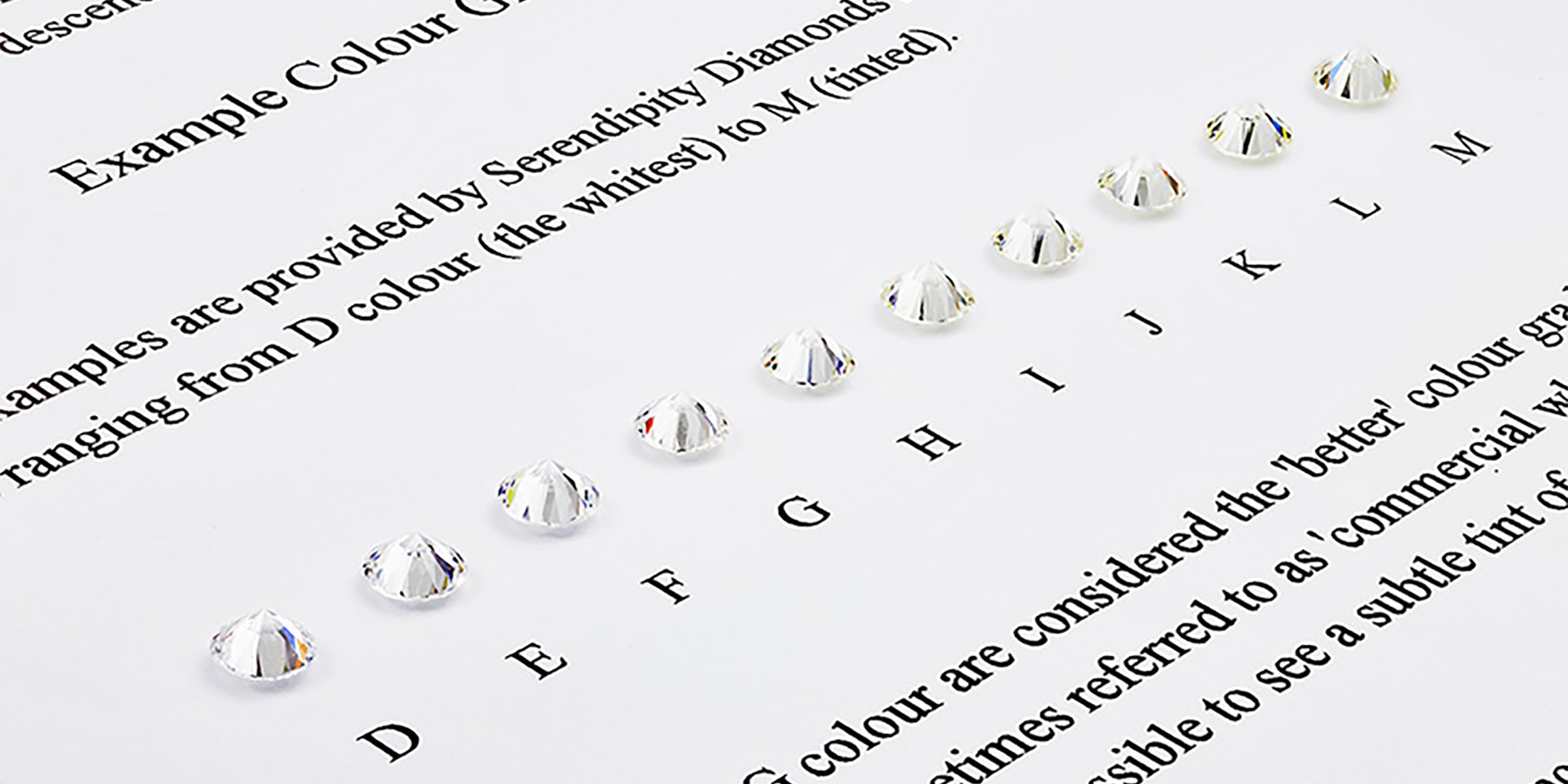
Understanding the 4Cs: Diamond Colour
What Is Diamond Colour?
When selecting the perfect diamond, colour plays a vital role in its appearance and value. Diamond colour refers to the presence of yellow or brown tints, with truly colourless stones being the most valuable. Natural white diamonds range from icy white to faint yellow or brown hues. The widely recognised grading scale, from D (colourless) to Z (light yellow or brown)—measures how little colour a diamond contains. The less colour present, the rarer and more prized the diamond. Understanding this scale allows you to appreciate how colour influences a diamond’s overall beauty and worth.
Diamond Colour: The Grading Scale
The Gemological Institute of America (GIA) colour grading scale spans from D (completely colourless) to Z (noticeable yellow or brown tint). Diamonds with less colour command higher value, brilliance, and purity. Here’s a concise breakdown:
D–F: Colourless Diamonds
The rarest and most coveted, these diamonds display a crisp, bright, icy white appearance that pairs beautifully with any metal setting.
G–J: Near Colourless Diamonds
Still largely white to the eye, these diamonds may carry subtle warm undertones, especially visible in certain lighting or beside higher-grade stones.
K–M: Faint Colour Diamonds
These show visible yellow or brown hues, more noticeable to the naked eye, offering a warmer character though lacking the crisp whiteness of higher grades.
Beyond M, colour becomes more apparent but remains too light to be classified as fancy coloured diamonds.
How Diamond Colour Influences Your Choice
When choosing a diamond, consider how its colour will appear once set—personal taste matters, but practical factors also shape the ideal choice.
Diamond Cut
The cut affects colour visibility. Brilliant cuts, like round shapes, scatter light to mask faint colour. Step cuts, such as Emerald or Asscher, with large open facets, reveal colour more clearly—making colourless grades (D–F) ideal for these styles.
Metal Type
Your setting metal influences how colour looks. Platinum and white gold enhance cool, icy tones and suit colourless to near-colourless stones (D–H). Yellow and rose gold complement warmer diamonds (I–J and below), creating a harmonious, softened contrast.
Stone Size
Larger diamonds tend to reveal more colour. Stones over 1.5 carats may show warmth more clearly than smaller counterparts of the same grade, making higher colour grades preferable for bigger centrepieces.
Halo and Side Stones
For designs with halos or side stones, matching colour grades is key to achieving a seamless, uniform appearance without distracting colour differences.
Why We Choose D–F Colour Diamonds
At True Brilliance, we offer only D–F colour diamonds to ensure every stone delivers exceptional clarity, brilliance, and timeless beauty. Our lab-grown diamonds match the quality of natural stones, allowing you to enjoy luxury without compromise or premium cost.
Colour in Lab-Grown Diamonds
Lab-grown diamonds share the same chemical makeup and crystal structure as natural diamonds, meaning their colour results from similar factors, like trace elements and growth conditions. They are graded on the same GIA scale, with less colour indicating higher value and sparkle.
Final Thoughts on Diamond Colour
Choosing the right diamond colour ensures your jewellery remains radiant and beautiful for a lifetime. The GIA scale helps distinguish subtle colour differences, with D–F stones offering the highest purity and brilliance.
True Brilliance specialises in high-quality lab-grown diamonds primarily within the D–F range, each one crafted with care to provide an ethical, sustainable alternative to mined diamonds without sacrificing luxury.
Remember, colour is just one of the Four Cs. Cut, clarity, and carat weight also shape the diamond’s overall allure and value.

